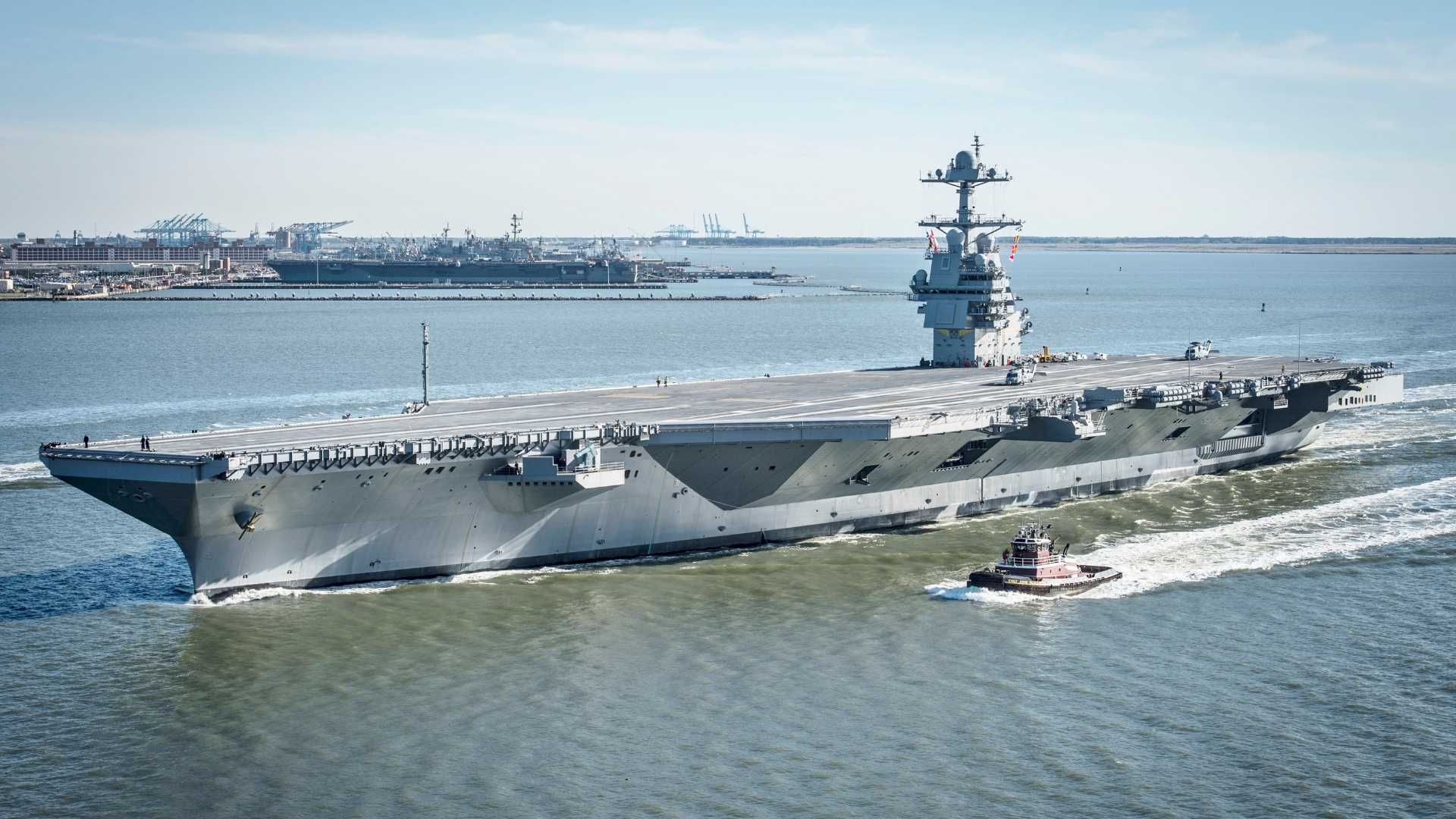Key Points
- US leads with the world’s largest aircraft carrier, USS Gerald R. Ford.
- China, UK, India expand fleets with advanced modern supercarriers.
- Carrier size defines power projection, dominance, and global reach.
Largest Aircraft Carriers in the World by Country: The aircraft carriers are among the most powerful naval assets ever built. They act as floating airbases, which allows nations to project power across oceans, support military operations, and respond to crises worldwide. One of the most common questions people ask is: Which country has the largest aircraft carrier in the world? The answer is clear that the United States, with its USS Gerald R. Ford (CVN-78), is currently the world’s largest and most advanced aircraft carrier.
Do You Know Trivia Facts about the Largest Aircraft Carriers?Floating Cities: USS Gerald R. Ford can accommodate over 4,500 sailors and pilots, making it a self-contained floating city. Aircraft Arsenal: A single US carrier can launch over 75 fighter jets in a single sortie. Nuclear Power: Gerald R. Ford is powered by two nuclear reactors, which give it essentially unlimited range for decades. China’s Leap: China’s Fujian (Type-003) is the first of its carriers designed with a catapult launch system similar to US supercarriers. US Naval Dominance: The US has 11 active supercarriers, which are more than all other countries combined. |

However, other countries such as China, the United Kingdom, India, and France also maintain impressive carriers that reflect their global ambitions. Let us explore their size, capabilities and countries with the largest aircraft carriers in the world through this blog.
Which Is the Largest Aircraft Carrier in the World?
USS Gerald R. Ford Class is the largest aircraft carrier that belongs to the United States. Recently, an order has been given by the Pentagon to deploy the USS Gerald R. Ford (CVN-78) Carrier Strike Group to the U.S. Southern Command (USSOUTHCOM) area near Venezuela. It is for strengthening U.S. Operations against Transnational Criminal Organizations (TCOs). The USS Gerald R. Ford (CVN-78), will now serve in a counter-narcotics capacity in the Western Hemisphere.
List of Top 12 Countries with the Largest Aircraft Carriers (By Country)
Aircraft carrier displacement data is drawn from official naval sources and reliable defence publications. Their size and capability are often measured by full-load displacement. It is the total weight of the ship when it is fully crewed, fuelled, and armed. The table below lists the top 12 countries with the largest aircraft carriers in the world, with verified displacement data and commissioning details.
| Rank | Country | Carrier Name / Class | Full-Load Displacement (Approx.) | Commissioned / In Service Since |
| 1 | United States | Gerald R. Ford class | 100,000 long tons (= 100,000 tonnes) | 2017 |
| 2 | United States | Nimitz class | 100,000 long tons (= 100,000 tonnes) | 1975-2009 (various ships) |
| 3 | China | Fujian (Type-003) | 80,000–85,000 tonnes | Launched 2022 (on trials) |
| 4 | United Kingdom | Queen Elizabeth class | Up to 80,600 tonnes | 2017 |
| 5 | Russia | Admiral Kuznetsov | 58,600 tonnes | 1990 (service 1991) |
| 6 | India | INS Vikrant (Vikrant class) | 45,000 tonnes | 2022 |
| 7 | France | Charles de Gaulle | 42,500 tonnes | 2001 |
| 8 | Italy | Cavour | 27,900–30,000 tonnes | 2008 |
| 9 | Spain | Juan Carlos I (light carrier role) | 27,000–30,000 tonnes | 2010 |
| 10 | Japan | Izumo-class (light carrier conversion) | 27,000 tonnes | 2015-2017 |
| 11 | Brazil | Atlântico (ex-HMS Ocean) | 21,578 tonnes | 2018 |
| 12 | Thailand | HTMS Chakri Naruebet | 11,486 tonnes | 1997 |
Source note: Displacement values are from the U.S. Navy, European naval authorities, and defence publications such as Naval Technology, Baird Maritime, and World Population Review.
Why Aircraft Carrier Size Matters?
Here are the reasons why the size of the Aircraft Carrier can impact its capabilities:
-
Power projection: Larger carriers can deploy more aircraft, allowing nations to operate far from their home shores.
-
Strategic dominance: They serve as floating command centres in contested waters.
-
Humanitarian role: Carriers also provide rapid disaster relief and medical support during crises.
Also Read: List of Largest Navy in the World, Check Here!
List of Top 10 Biggest Airplanes in the World!
List of Top 10 Richest Airlines in the World
Conclusion
Therefore, aircraft carriers remain the crown jewels of modern navies. While the United States continues to dominate with the world’s largest and most powerful carriers, other nations are steadily expanding their fleets. From China’s ambitious Fujian to India’s indigenous INS Vikrant, the global naval balance is shifting as more countries invest in these formidable warships. To see more of such stories, you can go ahead and add this site to your preferred sources by clicking here.
Comments
All Comments (0)
Join the conversation